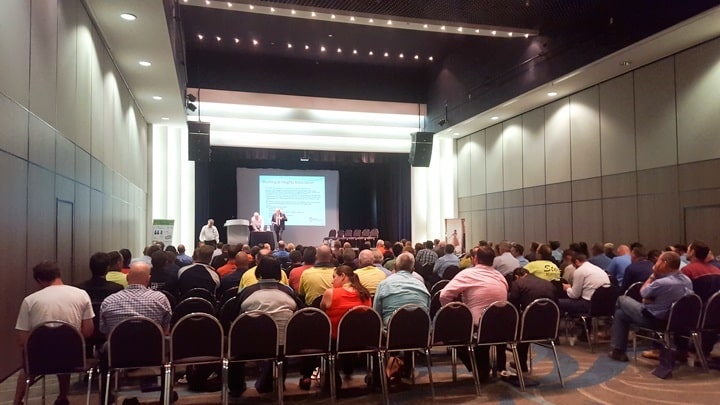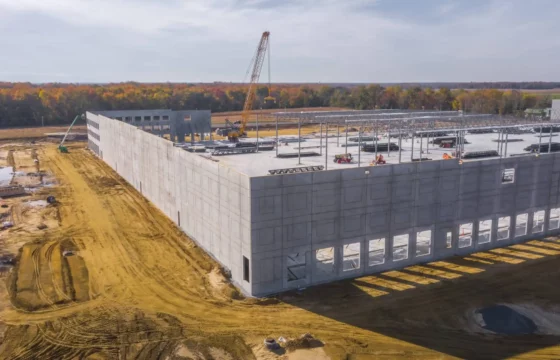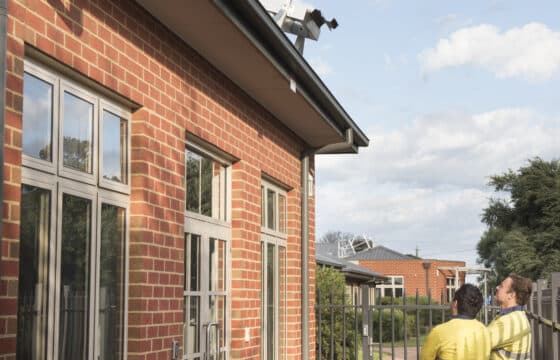Working at height forum in brief
Work Health and Safety Queensland (WHS Qld) ran a height safety forum during October, together with industry bodies and WorkSafe NSW. This brief report from Workplace Access & Safety provides an overview of the event for those who were unable to attend.
Ray Billiet, Regional Operations Manager at Workplace Health and Safety Queensland

In response to a large number of incidents that had “the potential to be fatalities”, said Ray Billiet, WHS Qld:
- Brought industry stakeholders together to create a successful network of concerned industry participants.
- Audited buildings to raise awareness among the PCBU’s/workplace managers and assess the scale of the problem.
Mr Billiet announced that forum attendees will be surveyed regarding whether the forum should be expanded to include issues.

Benjamin Bailey – Principal Inspector, Workplace Health and Safety Queensland
Key points:
a) Workplace manager/PCBU/body corporate is responsible for height safety systems.
b) Australian Standards are used as a benchmark for measuring safety.
c) Competence of installers and workers is key.
The two most common questions from workplace managers are:
1) How do I ensure the system I have installed is compliant?
- Before the system is installed, ensure the scope of works specifies that it must comply with the relevant Australian Standards. Documentation confirming compliance to Australian Standards (such as AS/NZS 1891, AS/NZS 4488, AS 1657 and AS/NZS 5532) needs to be provided once it is installed.
2) Once installed, who is responsible for the system being compliant?
- “It is the duty of the person in control of the system to ensure the system is compliant, prior to allowing anyone on that system,” says Benjamin Bailey. Check the documentation, including anchorage layout plans, system specifications, instructions for use, product information (such as testing data, installation requirements from manufacturer etc.).
Mr Bailey says there is a duty to supply and maintain documentation under WHS and referred to Sections 22 to 25 of the WHS Act.
The PCBU needs to make sure that the installers and users can demonstrate competence (eg. evidence installers have had product-specific training).
“PCBU’s should ensure that any installation or upgrades to a system are only carried out by an appropriately licensed installer,” says Mr Bailey.
Although compliance with Australian Standards is not mandatory, they are used to assess safety in conjunction with legislation.
The workplace manager must ensure:
a. The system has been designed, installed and certified in accordance with relevant standards;
b. Documentation that relates to the system is supplied, maintained and available to anyone who uses the system;
c. Emergency rescue plans in place and operating before work;
d. System inspected and tested within the timeframe (6 or 12 months as applicable);
e. Competent are engaged to install the system and use it;
f. Exclusion zones are established during system use so people in the area not affected; and
g. Signage is appropriate.

Russell Armstrong, Principal Inspector, Workplace Health and Safety Queensland
Key points:
1. Site visits indicated a serious issue
2. Access to and from systems is critical and often overlooked,
3. Design and layout of anchors must be done right.
WHS Qld carried out more than 300 inspections in 2014 focusing on the person in charge of the plant.
Issues were:
Equipment and installations
- Documentation was lacking (testing and maintenance records);
- Safe access to anchor points not provided, having to climb through windows or over balustrading due to a lack of ladders, stairways or walkways;
- Anchor point design was dual purpose (work positioning and fall arrest). Mixing the systems increases the risk of a fall, hitting the ground and suffering the pendulum effect;
- Risk of shear when the ropes lie over sharp edges such as laminated glass;
- Anchors not installed to the manufacturer’s instructions and installed without engineer’s advice. For example, installed into masonry or substrates that cannot support the loads;
- Unsafe access – exposed to falls during access and egress; and
- Non-compliant or damaged ladders.
Operators
- Operators were working alone or on opposite sides of the site, preventing timely rescue;
- Poor communication between workers, co-workers, building managers and tenants that meant there was a risk of objects dropping onto co-workers or others below;
- Exclusion zones: Maintenance can be deemed “construction work” under the WHS legislation and there are minimum requirements that need to be met like exclusion zones and traffic management. Something as simple minor maintenance work can be regarded as “construction work” from a legal point of view which is regulated and requires higher controls than other industries;
- No work method statements on site;
- Ropes left lying around and over the edges at the end of the day, which would be tampered with by occupants overnight.
- Rescue testing not performed or documented.
Mr Armstrong complimented the industry, noting improvements on the Gold Coast following the blitz.
Kane Scott, Inspector Regional and Response Operations – North, SafeWork NSW (formerly WorkCover NSW)
Key points
1. If it’s unsafe, say no
2. There are lots of recorded incidents,
3. The NSW program is in its early stages.
4. Human nature is to take short cuts.
Mr Scott identified several priorities, including:
- Certification of systems. Are they being inspected and tested? Documentation in place?
- Safe access to anchor points. Exposing workers to fall risks whilst they’re trying to get to and from the systems.
Over the next 12 months, rope access users will be targeted, together with scaffold design and construction.
Mr Scott explained that working at height is often considered low risk but the consequences are severe. In the previous six weeks alone:
a. An arborist fell 15 metres.
b. There was a roof maintenance worker step through a skylight, fell 2.5m. Fatality.
c. An electrician fell 3m off a ladder. Fatality
d. There was a 1.5 metre scaffold that somebody fell through. Broke his back
These were all incidents where probably the risk is considered low, but the consequence still very high.
Mr Scott pointed to the responsibilities of installers and believes end users are not routinely trained to use the system or provided with documentation.
Rick Millar – Working at Height Association member
Key points
1. Industry needs to reform.
2. AS/NZS 5532 controversy has been good for industry.
3. Harnesses can be misused.
AS/NZS 5532 caused lots of controversy in the industry, which was great because people started thinking about anchors and asking questions. Manufacturers were trying to lower the bar for testing of anchors which created lots of dialogue.
Installation problems are common and many installers are unaware of the Australian Standards requirements. Mr Millar agreed that harness training is generally insufficient.

Stuart Davies (Principal Advisor, construction and engineering; WHS Qld)
Mr Davies performs expert investigations into incidents.
Key points:
1. Observing disconnect between designers and installer.
2. Engineers need to consider installation.
3. Don’t buy the cheapest!
Mr Davies said documentation was often inadequate and reminded the forum that engineers must be able to verify that their designs are both practical and installed properly.
While acknowledging that Australian Standards are not mandated by Queensland legislation, Mr Davies said, “…we like people to comply with the Australian Standards as those Standards are modified as they show up to date knowledge and we want people to move towards compliance with the new Standards”.
Mr Davies reminded the forum to ask manufacturers if the anchor is suitable for the application rather than simply choosing the cheapest.
He also observed that screw bolts are increasingly being used as anchors. Mr Davies was concerned that their installation is difficult to assess. How was hole depth measured? What was the torque on the screw bolt once installed?
Mr Davis gave an example of observing an installed anchor. Same type, same brand; visually it was obvious that they weren’t installed the same because different amounts of fastener were exposed.
About Workplace Access & Safety
Workplace Access & Safety are the market leading height safety experts and are dedicated to building a general awareness of this highly specialised area of risk.
Our true end-to-end height safety solution covers all your needs from consultation to system design, equipment install and ongoing training and inspections. We ensure the right system for your needs and ongoing peace of mind.
Workplace Access & Safety is independently accredited by NATA™ to perform fall prevention inspections and has a NATA-accredited laboratory to perform testing of AS1657 equipment and AS/NZS 5532 safety anchors.
For more information regarding height safety, contact your local regulator or Workplace Access & Safety on 1300 552 984.



